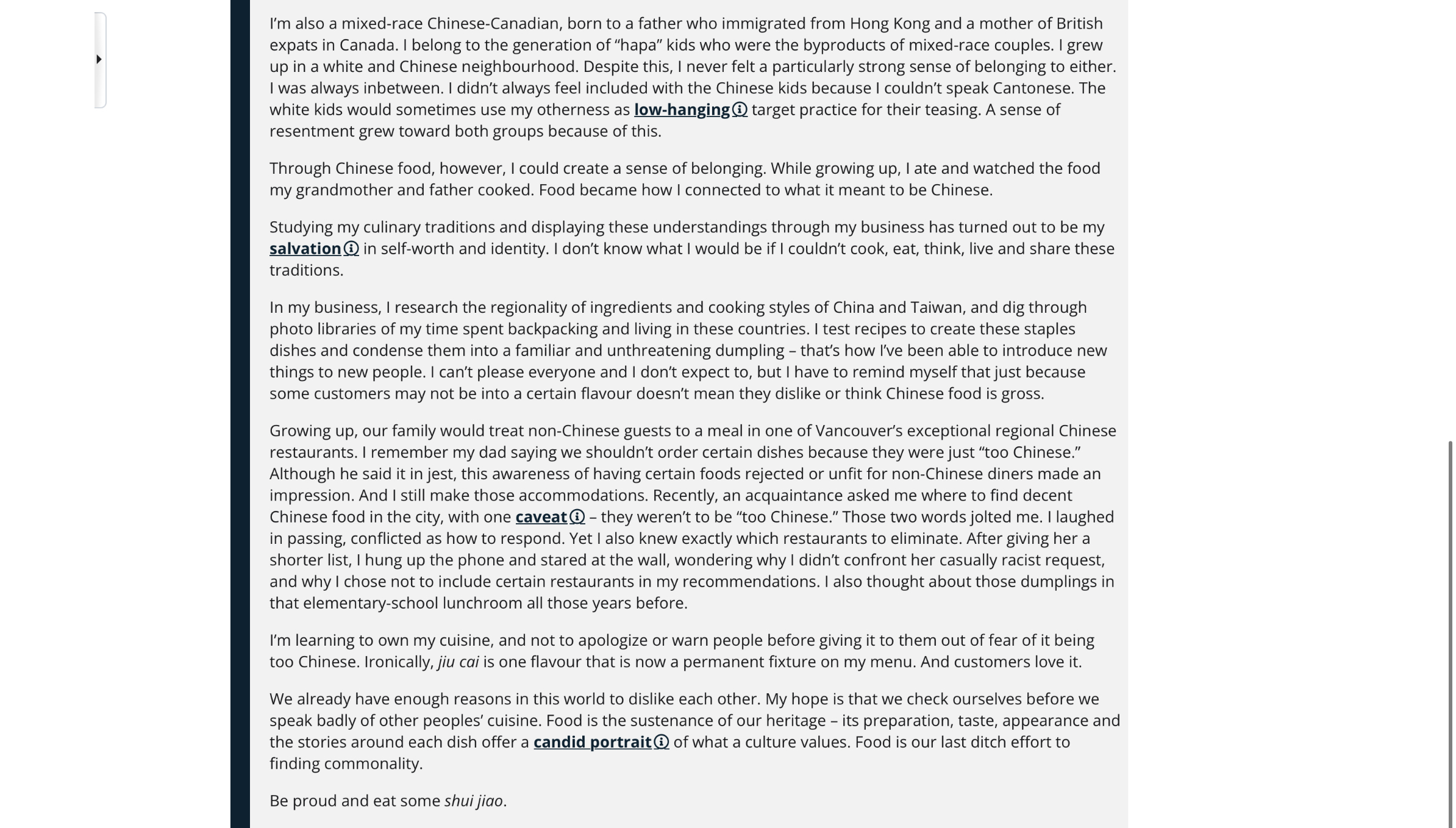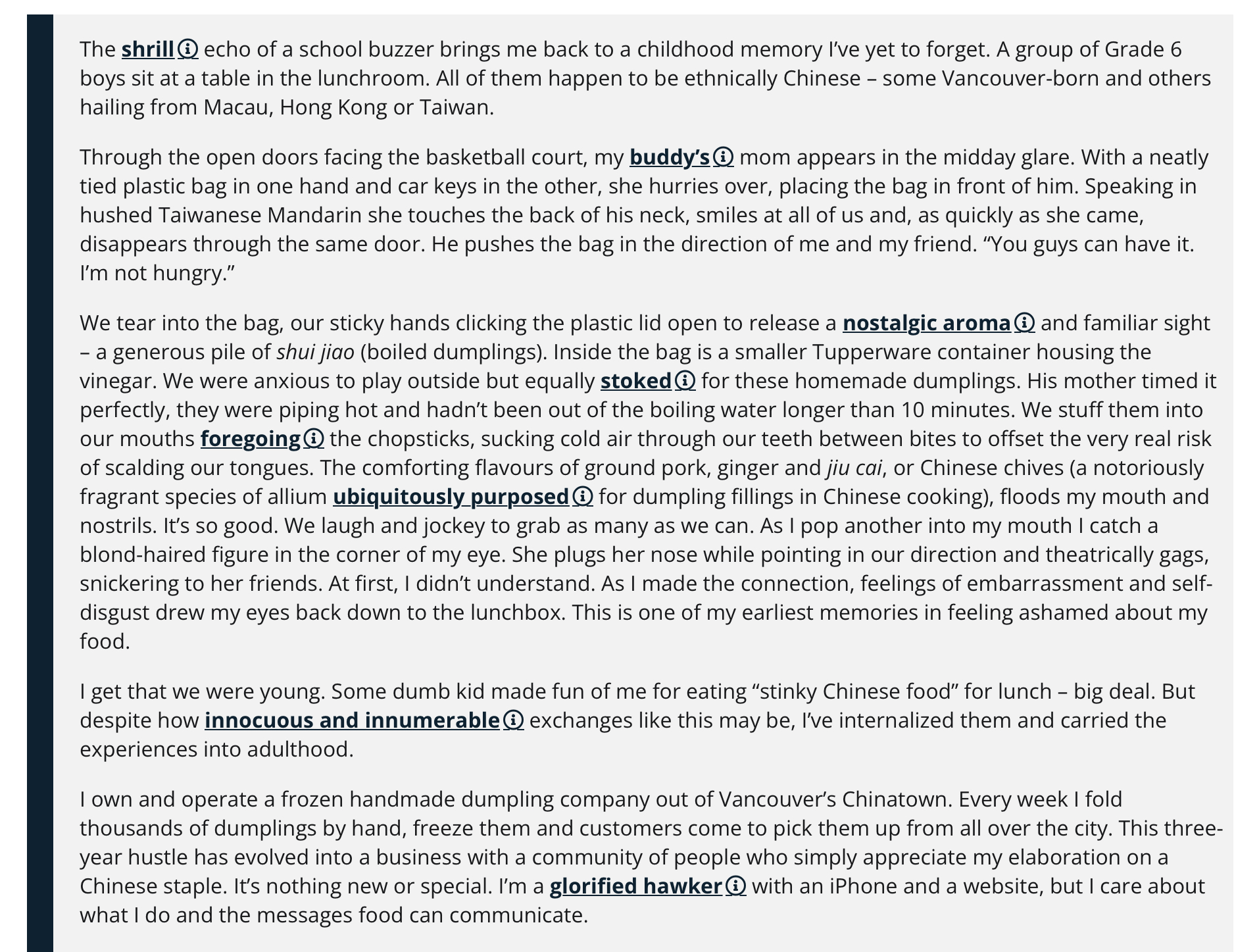Question
1. Identify the Topic . Think: What is the overall subject of the article? (1 point) 2. Identify the Thesis : Think: What is the


1. Identify the Topic. Think: What is the overall subject of the article? (1 point)
2. Identify the Thesis: Think: What is the author's message or main point/argument? (1 point)
3. Identify the Purpose Think: What is the author of this text trying to accomplish or achieve by writing and publishing this text? Express purpose and refer to one section of the text to support your interpretation (2 points)
For the questions in the next section, consider the audience and purpose of the text. How would those elements change if the author wrote a different text for a different audience?
Imagine Matthew Murtagh-Wu has written an email to his father about the same topic.
4. Identify the NEW Purpose: Think: What might Murtagh-Wu hope to achieve or accomplish with this new email to his father? Why might he be writing to his father? (Remember to review examples of 'purpose' in Module 2.) (1 point)
5. Consider Support: Would the supporting details and examples change in this new email (compared to the published article)? Please explain how and why. (2 points)
6. Consider Voice: Would Murtagh-Wu's tone and diction change in this new email? How? Why? (2 points)
7. Consider Title: What would be an appropriate subject line for this email? (1 point)
I'm also a mixed-race Chinese-Canadian, born to a father who immigrated from Hong Kong and a mother of British expats in Canada. I belong to the generation of "hapa" kids who were the byproducts of mixed-race couples. I grew up in a white and Chinese neighbourhood. Despite this, I never felt a particularly strong sense of belonging to either. I was always inbetween. I didn't always feel included with the Chinese kids because I couldn't speak Cantonese. The white kids would sometimes use my otherness as low-hanging target practice for their teasing. A sense of resentment grew toward both groups because of this. Through Chinese food, however, I could create a sense of belonging. While growing up, I ate and watched the food my grandmother and father cooked. Food became how I connected to what it meant to be Chinese. Studying my culinary traditions and displaying these understandings through my business has turned out to be my salvation in self-worth and identity. I don't know what I would be if I couldn't cook, eat, think, live and share these traditions. In my business, I research the regionality of ingredients and cooking styles of China and Taiwan, and dig through photo libraries of my time spent backpacking and living in these countries. I test recipes to create these staples dishes and condense them into a familiar and unthreatening dumpling - that's how I've been able to introduce new things to new people. I can't please everyone and I don't expect to, but I have to remind myself that just because some customers may not be into a certain flavour doesn't mean they dislike or think Chinese food is gross. Growing up, our family would treat non-Chinese guests to a meal in one of Vancouver's exceptional regional Chinese restaurants. I remember my dad saying we shouldn't order certain dishes because they were just "too Chinese." Although he said it in jest, this awareness of having certain foods rejected or unfit for non-Chinese diners made an impression. And I still make those accommodations. Recently, an acquaintance asked me where to find decent Chinese food in the city, with one caveat - they weren't to be "too Chinese." Those two words jolted me. I laughed in passing, conflicted as how to respond. Yet I also knew exactly which restaurants to eliminate. After giving her a shorter list, I hung up the phone and stared at the wall, wondering why I didn't confront her casually racist request, and why I chose not to include certain restaurants in my recommendations. I also thought about those dumplings in that elementary-school lunchroom all those years before. I'm learning to own my cuisine, and not to apologize or warn people before giving it to them out of fear of it being too Chinese. Ironically, jiu cai is one flavour that is now a permanent fixture on my menu. And customers love it. We already have enough reasons in this world to dislike each other. My hope is that we check ourselves before we speak badly of other peoples' cuisine. Food is the sustenance of our heritage - its preparation, taste, appearance and the stories around each dish offer a candid portrait of what a culture values. Food is our last ditch effort to finding commonality. Be proud and eat some shui jiao.
Step by Step Solution
3.44 Rating (157 Votes )
There are 3 Steps involved in it
Step: 1
1 Identify the Topic The overall subject of the article is the authors personal journey as a mixedrace ChineseCanadian exploring his sense of identity ...
Get Instant Access to Expert-Tailored Solutions
See step-by-step solutions with expert insights and AI powered tools for academic success
Step: 2

Step: 3

Ace Your Homework with AI
Get the answers you need in no time with our AI-driven, step-by-step assistance
Get Started


